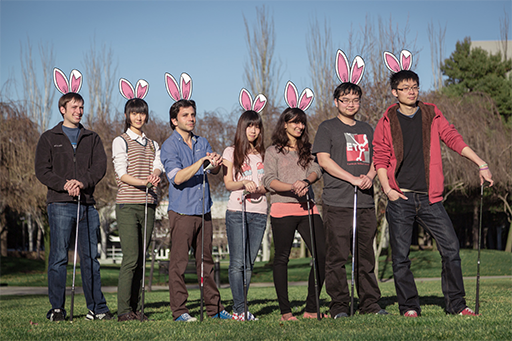February 3 – 7, 2014
Last week our client surprised us: instead of asking us to work on the idea for a modified golf game for connected TVs that we thought was a sure winner or the idea that seemed safest, they asked us to pursue our most ambitious idea—a kind golf meets Inception, where players tee o�ff of walls and ceilings.
This week we assembled a rough proof of concept, something to give us a sense of what our core mechanic would feel like and what it would take to build. A tight schedule and a clear goal aff�orded us the opportunity to implement Agile and Scrum practices more deeply. Up went the scrum board and each morning we “stood up” to discuss the previous day’s progress.
Throughout the week, our programmers worked on modifying a code base we inherited from an older golf game to demonstrate a new core mechanic. Actually putting our proposed mechanic on screen gave us a better sense of how our levels need to be designed.
Our artists de�fined a look for our game that would support its gravity-defying feel. They explored three different styles—one surreal, another science fi�ction-oriented, and a third light-hearted—all of which conveyed that this wasn’t going to be a normal golfi�ng game.
Meanwhile, our UI/UX designer considered how a user might actually execute this mechanic. This was particularly challenging because while our game is controlled on a tablet, the program runs in a browser, vastly limiting the touchscreen gesture vocabulary.
We ended the week with another presentation to our client. After demonstrating our proposed art styles and a PowerPoint animatic of our user interface, we showed them a prototype, driving from the green into a wall, getting the ball to stick to the wall, and then putting from the wall into a hole on the side of the wall. Our clients quickly (and kindly) pointed out that we had missed the emotional core of the game of golf: the anticipation the player feels as the ball soars and the dashed hopes of a near miss. Still, they gave us the green light to go further with the idea.
In the week ahead, we’ll continue exploring our strange golf game, designing our �first courses and building our �first original assets. Our overarching goal: to see if we can’t get the game feel right.
